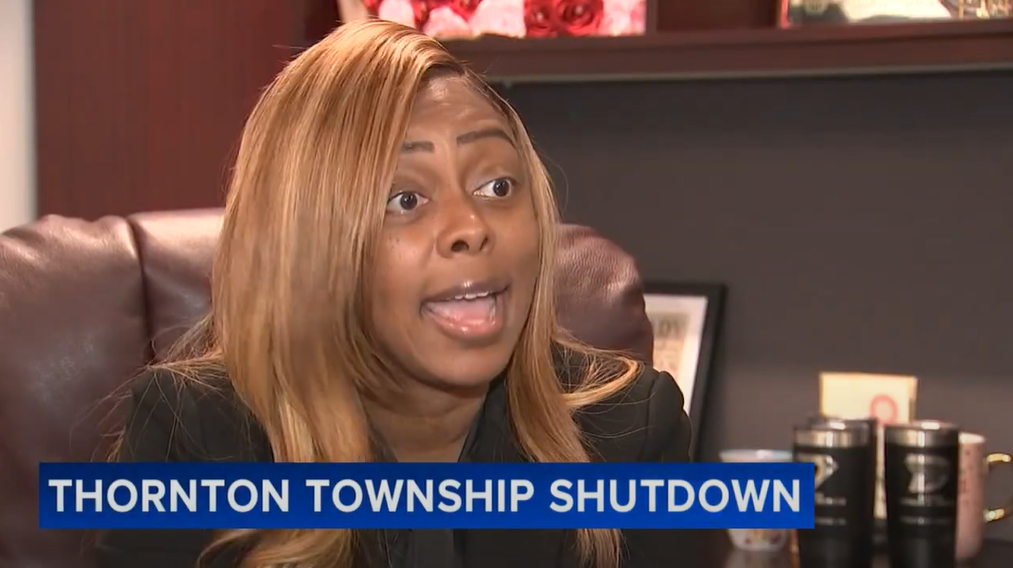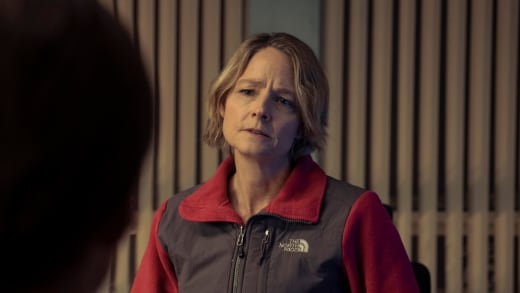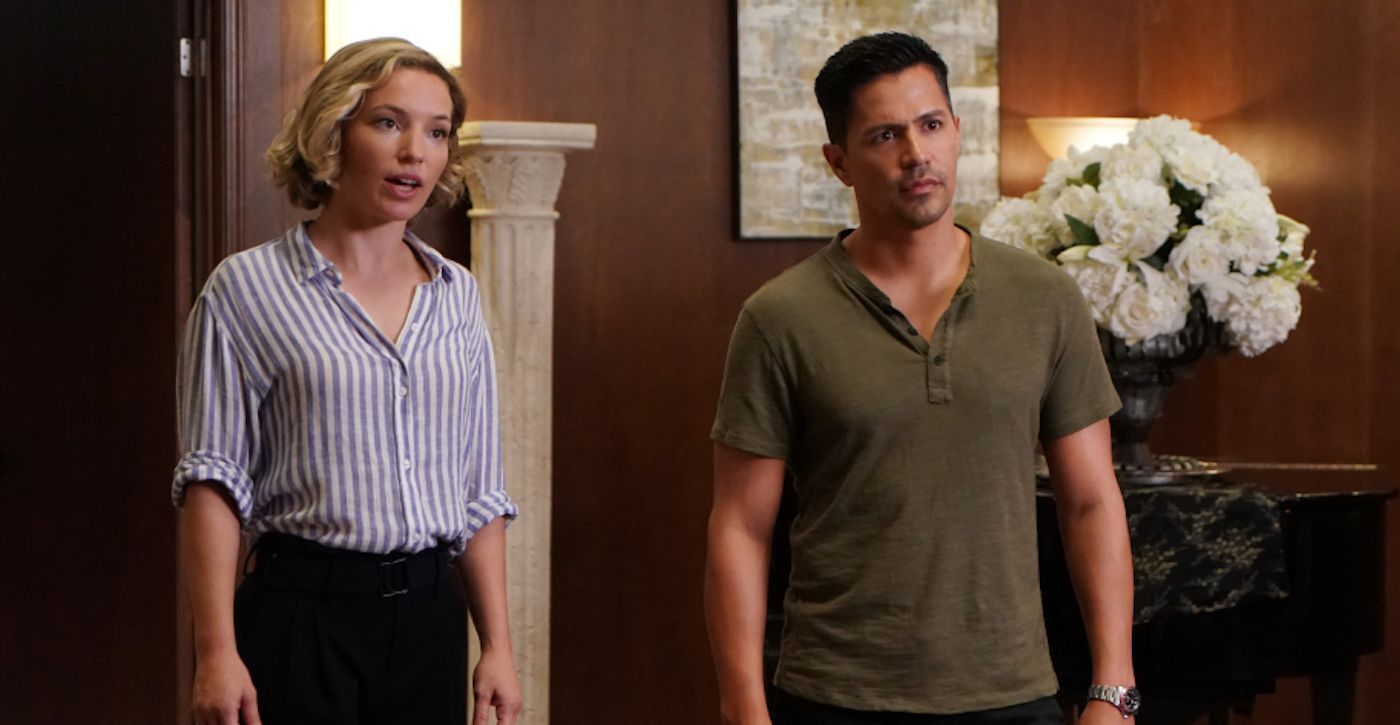The titular story in Jillian Danback-McGhan’s short story collection Midwatch opens with two depictions of Ashleigh via two photos used by the media while she is on trial for a crime committed in the Navy. The photo from boot camp shows a “typical smiling white girl, blonde hair slicked back in a tight bun.” The other photo is of a “bleached-blonde sweetheart smiling in a camouflage-print bikini without much fabric to it,” who is giving the “camera this sort of come-hither look, legs parted, a Remington Sendero in one hand, a deer carcass in another. Big buck, too. Ten points or more.”
What at first looks like a dichotomy in terms of representation of women in the military morphs into manifold representations of women we didn’t even know existed because, among Danback-McGhan many achievements in this collection, a significant one is revealing the varying roles of women in relation to the military.
Throughout the stories in Midwatch, we meet women like Kali, who before the Navy has inclinations toward violence that have to remain submerged. Women like Vera whose PTSD closes in on her, surrounding her at every turn. Or Dessa, whose whole life is a performance, including while at war.
Over email, we spoke about how Danback-McGhan’s stories widen the scope of military literature, not only by showcasing women, but by showing us how women participate in war, the origins of their violence, and the hauntings that pursue them.
Ivelisse Rodriguez: You attended the US Naval Academy and served as Surface Warfare Officer in the Navy. What brought you to writing?
Jillian Danback-McGhan: Frustration, mainly! I had always wanted to be a writer, but early in my writing pursuits, I received and internalized some pretty terrible advice, mainly that skill as a writer depended solely on natural genius. I decided to study literature instead, first as an undergrad, then in graduate school. Still, I couldn’t stifle the impulse to create. I would draft stories on the backs of scrap paper, mostly old bills and term papers. Many of the stories in Midwatch first appeared as anecdotes I scribbled in the margins of the notebooks I carried with me during my at-sea tours and deployments.
IR: I love this image of you compulsively scribbling away, while not really believing it would amount to anything.
JDM: In my mind, I was young, a woman, not directly involved in combat—who would want to read what I had to say?
IR: What changed your mind?
JDM: Following my at-sea tours (onboard the guided-missile destroyer, USS Farragut, for four years, where I completed two operational deployments), I was offered the opportunity to return to the Naval Academy and teach in the English Department. Fortuitously, my rotation coincided with the publication of some early works of fiction and poetry portraying the War on Terror in Afghanistan and Iraq, which are exceptional works of literature and important contributions to the war-literature canon. As I read these works, I couldn’t help but grow frustrated with their lack of depictions of women servicemembers. Moreover, it bothered me how hard I had to search to find some of the exceptional works of literature written by women during this time. I realized the stories I wanted to read already existed in fragments hiding within my old notebooks. If I wanted to see more writing about women in the military, I had to create it myself.
Being in the company of literature scholars and writers reoriented my thinking around what the practice of writing demanded. My colleagues helped me understand the craft of writing is less dependent on natural talent than, to paraphrase William Kentridge, a commitment to the image. I had a subject, and I had plenty of commitment, so natural genius be damned, I was going to write!
IR: How did you prepare to write/be a writer?
JDM: I wanted to pursue an MFA once I left the Navy, but life had other plans, so I made a point to participate in as many writing workshops, conferences, and writers’ groups as I could. Fortunately, many organizations generously sponsor workshops for veterans, and I regularly attended those hosted by Words After War, Community Building Art Works, Voices from War, the Veterans Writing Project, and Warrior Writers. Working with you during the Short Story Intensive at The Writer’s Center proved to be a turning point in my work. You provided such invaluable instruction and insight, and the stories in Midwatch finally started to take shape. That course helped me see beyond the conceits of what military fiction should be. I learned to listen to the story itself and consider how it wanted to be told, something I only uncovered by evaluating and ritualizing my own writing process. Annoyingly, my process is equal parts military discipline and creative spontaneity; once I stopped seeing these two approaches as oppositional, I gained more confidence in my work.
IR: You mentioned becoming well-versed in war literature while teaching English. What does your book add to that body of work?
JDM: In many ways, Midwatch deliberately surfaces (forgive the word choice) and expands upon themes appearing in literature written about women in the military. Women servicemembers commonly find themselves occupying a sort of liminal space: they outperform their male peers and conform to the same institutional standards, yet are still othered; they are beneficiaries of policies brought about by feminists, yet practitioners of the same militarism feminism rejects; they are considered aggressors by adversaries, yet are preyed upon by their own colleagues.
Unsurprisingly, the women in Midwatch are conflicted and messy, characters searching for a sense of completeness in a world demanding their fragmentation. I didn’t hold back from creating deeply flawed characters. Too often, women in military literature are aligned to the extremes of super-heroism or victimhood. I wanted to create characters with nuance who make mistakes and terrible decisions, who are kind of terrible at times, but are trying their best despite being trapped in this double-bind. For this reason, I tried to craft each story in a way which makes the reader feel implicit in each character’s decisions. The characters can’t escape their choices, so the reader can’t, either.
If I wanted to see more writing about women in the military, I had to create it myself.
Midwatch also acknowledges the tradition of women war writers while noting there is a long way to go for equal recognition, both in life and in literature. Women have fought in and written about every war involving the United States, though historically they have rarely been recognized for it. For example, Aphra Behn wrote one of the first texts about war in colonial America. Later, Deborah Sampson, the Revolutionary War heroine who fought for the Continental Army for three years while disguised as a man, wrote an autobiography of her experience. Women played important roles as soldiers, journalists, and medical professionals in every war thereafter. Even some of the best-known American writers, such as Emily Dickinson and Edith Wharton, wrote literature which can be considered part of the war literature canon but are commonly excluded from it.
All of that is to say—women’s contributions to writing about warfare and the military experience isn’t new. Still, works of fiction by women writers remain woefully underrepresented in military literature, something I intentionally call out in the collection’s introduction.
IR: That is a fascinating history about women writing about warfare.
I want to go back to what you said about women in the military being perceived as aggressors while still being preyed upon by their colleagues. This idea comes through in your stories. There is an assumption of power that is associated with military members. Of course, that is not true as there are hierarchies. But I am intrigued by how there is this space that is (falsely) imbued with power, so one would think that all members would have access to that power. And, sometimes, your female characters do. But they are also subject to sexual assault, coercion, harassment, and undermining. For women in the military, power seems to be given and taken. Can you discuss the psychic consequences of this on your characters? How do the characters in your book negotiate this?
JDM: The objective of warfare is to impose one’s will on the enemy, which places violence at the root of the military’s very existence. It is dressed up in formal uniforms and restrained by rules of engagement, but that Clausewitz-esque primordial violence is always present.
What interests me as a writer is how, when constraints of discipline and oversight are eroded by misogyny or apathy or poor leadership, that imposition of power turns inward. These are the environments in which sexual harassment and assault and other forms of abuse occur. Women are left to wonder whether a word or an insinuation will turn physical. Midwatch explores what happens when women operate in these extreme environments. They risk being labeled as an alarmist if they speak up and risk their safety if they don’t. It puts them in a constant state of alert. In “Dearest,” for example, Vera becomes increasingly paranoid from being constantly on alert.
But women are also practitioners of state-sanctioned violence. They know how to impose power over an adversary, which raises important questions about the authorized use of violence when a threat comes from within. These characters interpret violence as the only language a potential threat will understand and willingly employ it, notably Midshipman Connor in “Trou”; Kira in “The Patron Saint of Cruise Missiles”; and the narrator in “Midwatch.”
IR: It seems like some of your female characters are also trying to outrun this violence. For example, Kali in your story “Dead Baby Jokes,” has multiple selves that she thinks she needs to firmly keep separated. She’s trying to constantly keep in check the violent impulses in her.
JDM: Violence does that to a person, doesn’t it? Dissociation is a trauma response which has allowed humans to survive, yet it can often be the driving force behind why people inflict similar traumas on themselves and others. It is far easier to say, “Yes I did that, but it wasn’t really me” than it is to accept blame. In Kali’s case, societal expectations amplify this willing separation of selves; she is conflicted by wanting to engage in both destruction and creation, by seeking violence for causes she views as just, yet she realizes her inability to openly exist in a world which looks at women’s aggression as monstrous. So, she engages in a willing fragmentation of self to keep her impulses distinct.
Women servicemembers occupy a liminal space: they outperform their male peers and conform to the same institutional standards, yet are still othered.
Sentiments of moral injury or exposure violence can compound this response even further, like it does for Sam in “The Curator of Obscenities.” As a character, Sam is the complete inverse of Kali, yet their emotional responses create similar fragmentation. Kali believes the convergence of her separate selves is dangerous to others when she really fears exposure. Sam rationalizes his emotional compartmentalization to keep his girlfriend from worrying when he really attempts to protect himself from the emotional consequences of the horrors he’s witnessed.
IR: The women in your book also inhabit different spheres of power. In the story “Hail and Farewell,” for example, the mother and daughter find power by throwing dinner parties and via their relationships to men in high-level positions in the military. Can you discuss how some of your characters create their own spheres of power?
JDM: What I find fascinating from a character perspective is what happens when people are excluded from more directive forms of power. In “Hail and Farewell,” which you mentioned, Sara and her mother create gathering spaces designed to influence their husbands’ social standing and advance their careers. This creates a highly gendered parallel hierarchy among the other wardroom wives. In “Midwatch,” Ashleigh’s relationship with her division officer affords her preferential treatment, which she protects to the point of coercion. Unsurprisingly, these characters exploit their power because they’ve essentially replicated the same predatory dynamics from which they are excluded.
IR: In a similar fashion, in some of your stories, the idea of “pretty privilege” does not hold the cachet it holds in the civilian world. Can you discuss how some of your female characters have to re-train themselves to enter the world of the military, especially when it comes to beauty standards?
JDM: To be a woman in the military is to be observed. This is true for the entire military, certainly, but even more so for women. They are a minority in all branches of service. They comprise a minority of most military units, so they tend to stick out, even more so if you are, say, a senior woman whom younger women look up to for guidance, or a trailblazer whom others scrutinize for signs of failure or triumph. It can feel like a constant performance, a perpetual attempt to put on the best possible show for an (occasionally hostile) audience. Dessa, a character from my story “Comeback” who is a former child actor, feels this most acutely. The environment almost necessitates a performance of gender, the intent to appear masculine enough to be taken seriously. Pretty only complicates matters. Beauty can be seen as a threat to a woman’s physical safety or a source of nasty rumors. In “Dearest,” Vera recounts her experience of being stalked, which is essentially a violent mutation of observation: her stalker tells Vera she’s “the prettiest lieutenant I’ve ever seen,” a compliment which distorts responsibility for the act. In the title story, “Midwatch,” a young sailor isn’t taken seriously when she reports unwarranted attention from her division officer because she is unattractive.
Perceptions around beauty can also lead to uncomfortable dynamics between military spouses, for example, who are concerned about their husbands deploying and working in proximity with an attractive woman, like many of the wardroom wives do in “Hail and Farewell.”
Too often, women in military literature are aligned to the extremes of super-heroism or victimhood.
It is a no-win situation, too, as unattractiveness can manifest as a source of criticism. In “Trou,” the main character, Sofia, reflects on the sexists slurs she’s encountered in her life and notes “whatever adjective inevitably precedes it” typically involves some commentary on a woman’s appearance or weight. Really, the military gaze is unrelenting for women.
Naturally, much of the discussion surrounding the military gaze pertains to its outward direction—drone surveillance, for example. I don’t mean to minimize the implications of this phenomenon through my discussion of its inward application. Rather, it is worth mentioning how the military’s practices inevitably get turned inward. Case in point—“Dead Baby Jokes” deliberately begins with Kali surveilling a potentially hostile vessel, but the story ends with Kali looking back at herself. One ignores this reality to their own detriment, as the characters in Midwatch learn.
IR: In the military, there tends to be a class division between those who are enlisted and those who are officers, especially officers who attended military academies. There is a strong presence of enlisted characters in your stories. Can you discuss these class divisions and how they inform some of your characters?
JDM: The intent for the two-tier system of officers and enlisted is to distinguish those who bear the “burden of authority” (officers) from those who act as subject matter experts in a type of journeyman model (enlisted). Like all systems, the idea doesn’t always match its execution.
Comparisons between the military and Regency-era social dynamics appearing in Jane Austen’s novels may not be immediately obvious, but I’ve found they’re often the best way to describe the imposed class divisions between officers and enlisted. Many Naval traditions were inherited from 18th century British Naval customs. To this day, officers and enlisted sailors live and eat in separate spaces. Enlisted sailors are selected for Mess Duty, where they serve officers their meals in the wardroom. Family members are considered an extension of the service member—prospective Commanding Officers’ spouses are required to attend a course on proper military etiquette and are expected to host social gatherings. Different support groups exist for officer and enlisted spouses, though many units have attempted to unify these in recent years.
Women have fought in and written about every war involving the United States, though historically they have rarely been recognized for it.
Honestly, the realities of the Navy make my job as a writer far too easy at times.
As you can imagine, these antiquated practices can problematically amplify social dynamics. In “Midwatch,” enlisted sailors fail to report an officer’s abusive conduct because they don’t think anyone would take the claim seriously. A Chief Petty Officer is unable to control a vindictive officer in “Dead Baby Jokes,” while enlisted members of a boarding team make immature jokes as subtle forms of rebellion. In “The Patron Saint of Cruise Missiles,” a Chief half-jokingly states her accolades aren’t publicized because she’s “not a college-educated white woman.” And a woman’s allegations of harassment against a more senior officer are questioned in “Dearest” because they could “ruin a man’s career.”
IR: Knowing all that you know now, like Midshipman Connor in “Trou” who wonders “why try” if the navy is full of “assholes,” what advice would you tell your younger self?
JDM: This was such a tricky scene to write—I had to fight the urge to tell my former self what she wanted to hear. Though, like all twenty-somethings, I wonder if I’d listen… That said, my advice would probably be: Find your advocates and don’t be afraid to ask for help. Speak up for others when you can. You won’t change every situation, but no attempt is ever in vain. Don’t compare yourself to others or let others’ expectations dictate your own decisions. You’re going to make mistakes and will never have all the answers, so don’t be afraid to ask questions. And try to have a little fun along the way. The work of the Navy is serious, but you don’t have to take yourself too seriously.



























































